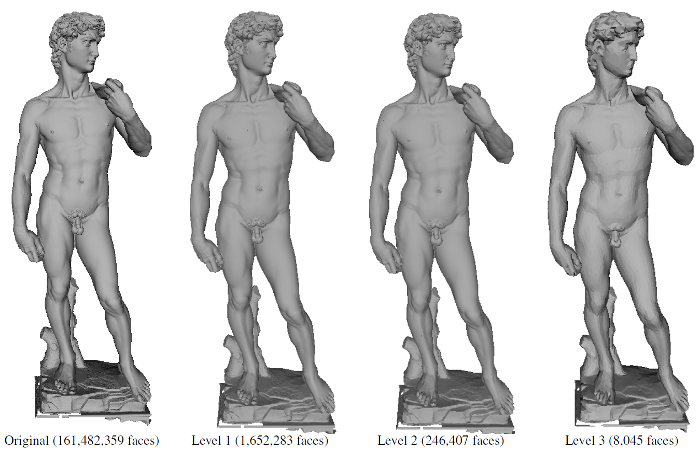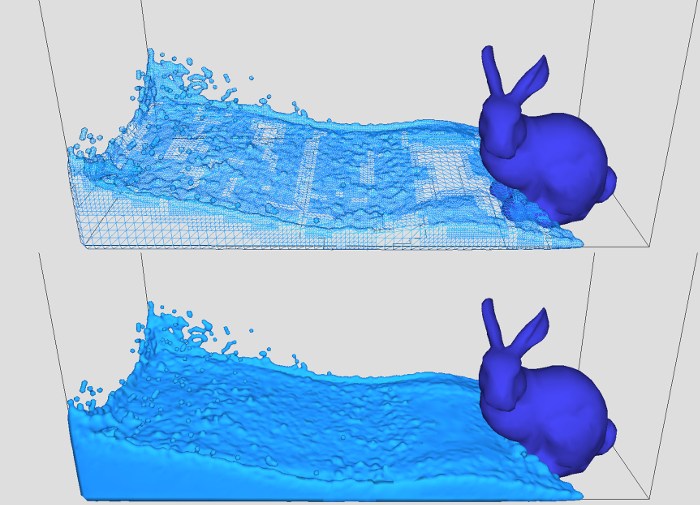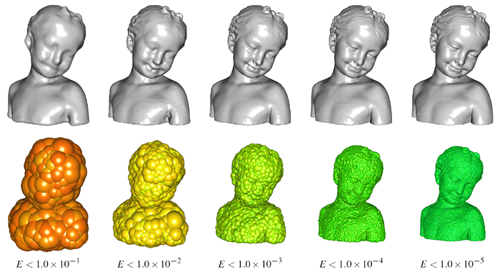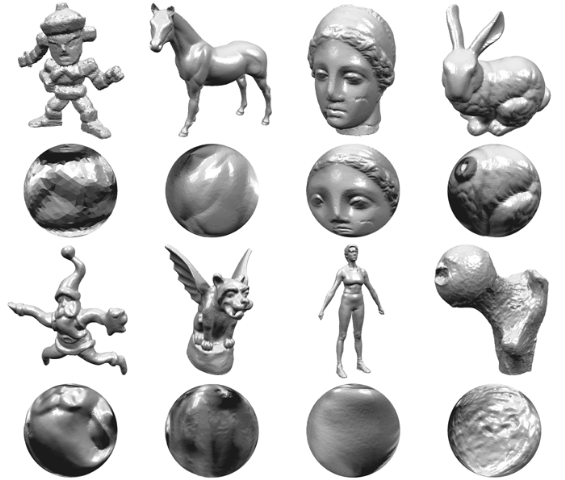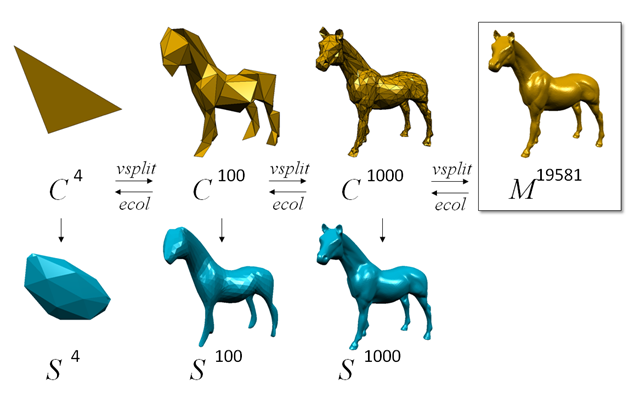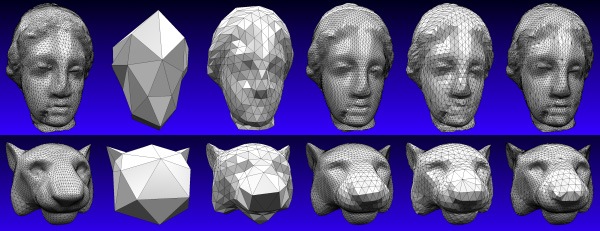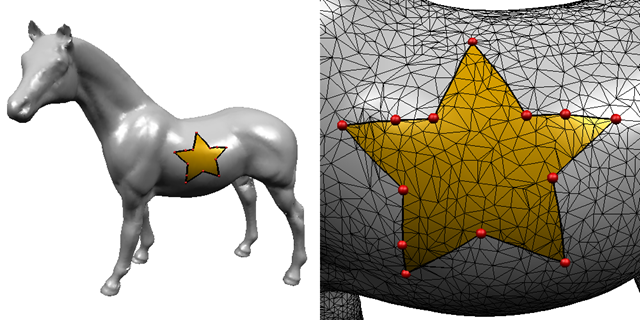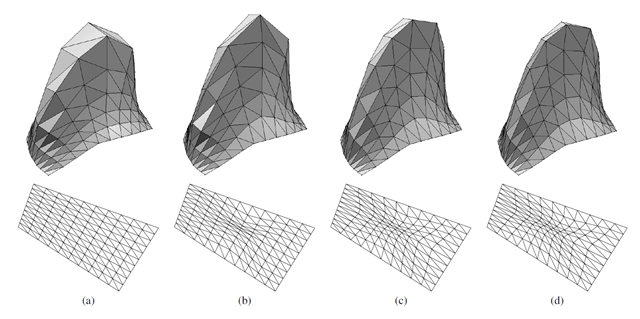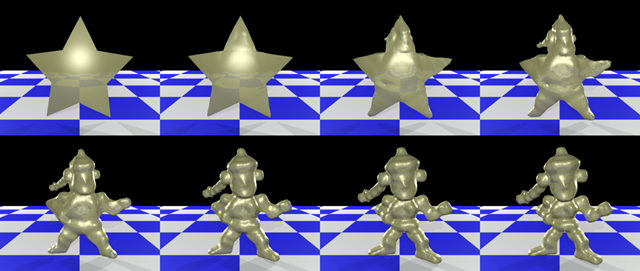In mesh simplification, in-core based methods using Quadric Error Metric (QEM), which apply a sequence of edge-collapse operations, can generate high-quality meshes while preserving shape features. However, these methods cannot be applied to huge meshes with more than 100 million faces, because they … Continue reading “Out-of-Core Framework for QEM-based Mesh Simplification”
Category: Meshes
GPU-based Adaptive Surface Reconstruction for Real-time SPH Fluids
We propose a GPU-based adaptive surface reconstruction algorithm for Smoothed-Particle Hydrodynamics (SPH) fluids. The adaptive surface is reconstructed from 3-level grids as proposed by [Akinci13]. The novel part of our algorithm is a pattern based approach for crack filling, which is recognized as … Continue reading “GPU-based Adaptive Surface Reconstruction for Real-time SPH Fluids”
Hierarchical Approximation of Implicit Surfaces from Meshes
This paper describes an efficient method for the hierarchical approximation of implicit surfaces from polygonal meshes. A novel error function between a polygonal mesh and an implicit surface is proposed. This error function is defined so as to be scale-independent on its global behavior as well as … Continue reading “Hierarchical Approximation of Implicit Surfaces from Meshes”
Conformal Spherical Parameterization and its Application
Spherical parameterization is one of geometry processing techniques which maps a mesh to a sphere, and is expected to the use in the various applications of computer graphics, CAD/CAM and so on. In this paper, we propose a robust and fast computation method for high quality conformal spherical param … Continue reading “Conformal Spherical Parameterization and its Application”
Interactive Physically-based Animation for Dense Meshes
In this paper we describe an interactive physically-based animation system for dense meshes. Our method extracts a coarse mesh from an original mesh to make a tetrahedral mesh for the reduction of computational costs. For computing reaction forces we precompute penetration depth values and gradients … Continue reading “Interactive Physically-based Animation for Dense Meshes”
MeshToSS: Converting Subdivision Surfaces from Dense Meshes
This paper introduces the theoretical aspects of MeshToSS, a software system for converting dense triangle meshes into Loop subdivision surfaces. The software takes mesh-format data such as VRML and transforms it into a subdivision surface that approximates the input mesh. The output is either the c … Continue reading “MeshToSS: Converting Subdivision Surfaces from Dense Meshes”
Multiresolution Interpolation Meshes
We propose a new multiresolution-based shape representation for 3D mesh morphing. Our approach does not use combination operations that caused some serious problems in the past approaches for mesh morphing. Therefore, we can calculate a hierarchical interpolation mesh robustly using two types of sub … Continue reading “Multiresolution Interpolation Meshes”
Approximate Shortest Path on Polyhedral Surface and Its Applications
A new algorithm is proposed for calculating the approximate shortest path on a polyhedral surface. The method mainly uses Dijkstra’s algorithm and is based on selective refinement of the discrete graph of a polyhedron. Although the algorithm is an approximation, it has the significant advantag … Continue reading “Approximate Shortest Path on Polyhedral Surface and Its Applications”
Interactive Homogeneous Remeshing
Unstructured triangular meshes are the most standard representation for surface geometry in computer graphics applications due to their simplicity and flexibility. Especially, meshes with special regular connectivity such as subdivision connectivity and with uniform spatial distribution are more use … Continue reading “Interactive Homogeneous Remeshing”
Metamorphosis of Arbitrary Triangular Meshes
Recently, animations with deforming objects have been frequently used in various computer graphics applications. Metamorphosis (or morphing) of three-dimensional objects is one of the techniques which realizes shape transformation between two or more existing objects. In this paper, we present an ef … Continue reading “Metamorphosis of Arbitrary Triangular Meshes”
